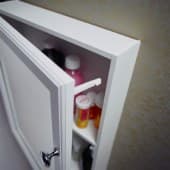More than 8.5 million adults reported using them, CDC researchers found
WebMD News from HealthDay

By Steven Reinberg
HealthDay Reporter
THURSDAY, Aug. 29 (HealthDay News) -- About 4 percent of American adults -- more than 8.5 million people -- have used a prescription sleep aid in the past month, and the use increases with age, U.S. health officials reported Thursday.
In addition, more women (5 percent) than men (3.1 percent) over the age of 20 take these drugs, and those with higher education levels are more likely to use them, the researchers from the U.S. Centers for Disease Control and Prevention found.
"This is the first time we have a national estimate on how many people are taking prescription medications for sleep," said report coauthor Yinong Chong, an epidemiologist at the CDC's National Center for Health Statistics.
In the past 20 years, there has been reports of an increased number of prescriptions for sleep aids in the United States. But, Chong said, the use of such drugs has remained stable in the past decade, rising about only 1 percent between 1999 to 2010.
The drugs included in the research were: butabarbital (brand name Butabarb), chloral hydrate (Aquachloral), estazolam (Eurodin), eszopiclone (Lunesta), flurazepam (Dalmane), quazepam (Doral), ramelteon (Rozerem), temazepam (Restoril), triazolam (Halcion), zaleplon (Sonata) and zolpidem (Ambien).
Using data from the National Health and Nutrition Examination Survey, 2005 to 2010, the CDC researchers found that self-reported use of the sleep aids was lowest among the youngest age group (those between 20 and 39 years old) at about 2 percent, but it increased to 6 percent among those aged 50 to 59 and reached 7 percent among those 80 and older.
Dr. Jordan Josephson, a nasal and endoscopic sinus surgeon at Lenox Hill Hospital in New York City, said he was not surprised by the numbers because "sleep disorders have been estimated to affect 50 million to 70 million Americans."
"More accurate diagnosis and better education has led more people to seek treatment for these disorders, which affect them in every aspect of their lives," Josephson said.
For example, snoring and sleep apnea are the No. 1 medical cause of relationship breakups and divorce, Josephson said. Insomnia leads to fatigue, which leads to poor performance at work and school, as well as motor vehicle accidents and injuries while using heavy machinery, he added.
"For those people who suffer from fatigue and/or daytime somnolence -- being tired and feeling sleepy -- it is important for them to seek treatment from a board-certified sleep specialist," he said. "With proper diagnosis and treatment, these patients will have an improved quality of life."
Sleep-aid drugs have, however, become a new focus for the U.S. Food and Drug Administration over concerns that they may impact people's ability to drive the next morning. New evidence appears to confirm what many people have long suspected: that the effects of sleep drugs can persist well into the next day.
source : Prescription Sleep Aids a Common Choice for American Insomnia








